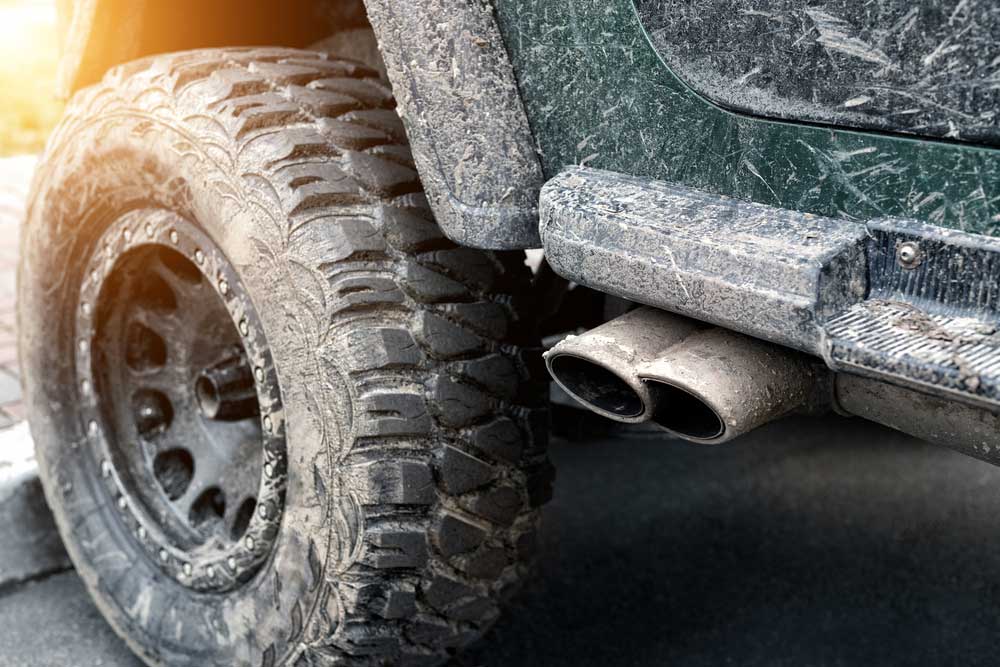Tyre knowledge is essential for 4×4 drivers, particularly when it comes to making a decision between fitting all-terrain options, or opting for mud tyres! The best choice is frequently more complicated than you might think – both all-terrain and mud tyre manufacturers have upped their game in recent years, which means that the traditional drawbacks of each type of tire are no longer as prominent – the days when mud tire users could expect to experience considerable noise when their vehicle was on the highway, for example, are long gone. Modern mud tires (along with improved cabin insulation) mean driving noise is often the same regardless of tyre choice.
Here we consider the differences between all-terrain and mud tyres, as well as take a look at what to take into account when deciding what type of tyre you’re going to fit on your vehicle.
Table of contents

The Differences Between An All-terrain Tyre And A Mud Tyre
All-terrain tyres are intended to be a good, all-around type of tyre. They are sometimes referred to as a hybrid between standard street tyres (of the sort you’d find on a hatchback or sedan) and mud tires, which are intended for use in severely boggy conditions. All-terrain tyres are characterised by an open tread pattern and deeper grooves between the tire blocks. They have sidewalls that are thicker and more resistant to punctures in comparison to road tyres. Good examples of all-terrain tyres include the Cooper AT3LT and the Maxxis MT772.
Mud tyres are intended to be used primarily in extremely muddy conditions. They are characterised by very deep grooves and large blocks. Modern mud tyres (such as the Mickey Thompson Baja MTZP3) use technology that self-cleans the tyre, ensuring rocks, chunks of mud and similar detritus don’t clog the tyre. Angled shoulder scallops, the use of super-tough tyre material (frequently reinforced by silica or similar) and a design that facilitates stone ejection. Mud tyres also work well at low pressures.
What To Consider When Deciding Between All-terrain Tyres Vis Mud Tyres
Intended Usage
The reality is that relatively few 4×4 owners use their vehicles mainly for off-road use. If you’re the type of driver who dreams of axle-deep mud, but actually rarely encounters anything more challenging than a gravel track or the odd pothole, mud tyres aren’t going to be suitable. We usually recommend that drivers stick to all-terrain tyres unless muddy terrain forms a large percentage of their intended driving.
What About Sand?
Mud tires work by gouging out chunks of the surface they’re travelling over. This means they can work effectively when travelling over sand, but the ride may not be as smooth as you would like.
All-terrain tires can handle sand but may struggle if the sand is very loose.
All-terrain tyres are better in the wet
Although mud tyres ace it in mud, they don’t have much grip on a smooth, wet surface. For this reason, they’re definitely not recommended as the safest choice for wet roads, tracks or similar. All-terrain tyres are suitable for use in both the wet and the dry.
Fuel efficiency
Road tyres are the most fuel-efficient option for your 4×4, followed by all-terrain tyres. Mud tyres do cause your vehicle to consume more fuel per km, but that needs to be weighed against the fact that, in extreme terrain, mud tyres will get you from a to b in a way that no other type of tyre will.
In most cases, all-terrain tyres will be the best choice for 4×4 drivers, unless they’re regularly driving off-road. If you’re not sure whether a Kumho MT51 or a Cooper STMaxx tyre is going to be best, get in touch with the team at Southlakes 4×4 and we’ll be happy to advise.

Recent Comments